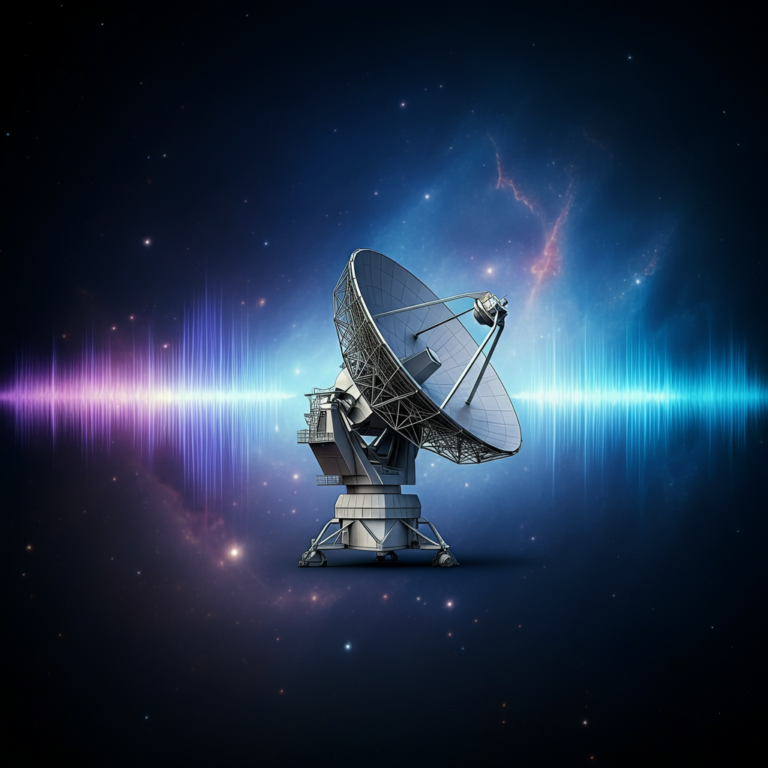If you’ve ever stared up at the night sky, you might have wondered—what does space sound like? Do the stars hum, or do planets have a rhythm? It’s an intriguing thought, isn’t it? While the idea of “listening to the universe” may sound like a concept ripped straight from science fiction, it’s deeply rooted in real-world science and technology.
This blog dives into the fascinating realm of space “sounds.” We’ll explore how sound travels in space (spoiler alert—it doesn’t in the way we’re used to), the natural phenomena that create wave signals, and the breakthroughs in capturing these cosmic melodies.
Let’s put on our metaphorical headphones and explore what the universe has to “say.”
The Science Behind the Sound of Space
Can you hear someone scream in space? If you’ve seen the movie Alien, you already know the answer is no. Space is often described as eerily silent. But why? It all comes down to the science of how sound travels.
Sound needs a medium—like air, water, or metal—to travel. Here on Earth, air molecules collide and carry sound waves to our ears. Space, on the other hand, is a near-perfect vacuum. There’s no medium, no particles to vibrate and form sound waves. It’s kind of like trying to swim in a pool with no water—it’s just not happening.
However, this doesn’t mean the universe is entirely devoid of “sound.” Sounds, or more accurately, waves in other forms—electromagnetic, gravitational, or radio waves—are out there, and they carry their own unique symphonies. These can’t be heard with our ears directly, but they can be detected and translated into audible sounds by advanced instruments.
Cool, right? It’s like the universe has its own language, and scientists are its translators.
The Sources of “Sounds” in Space
When we say “the sounds of space,” what we really mean are waves—vibrations that can be detected as data. Various phenomena can generate these waves, and they’re nothing short of extraordinary.
- Black Holes: Black holes are not just cosmic vacuum cleaners—they’re also creators of some spooky soundscapes. For example, NASA recorded the vibrations of the Perseus Galaxy Cluster. When translated, it sounded like a deep, eerie hum.
- Pulsars: Spinning neutron stars, also known as pulsars, emit beams of radiation at incredibly regular intervals. When digitally converted, these pulses generate rhythmic, almost drum-like beats. Think of them as the metronomes of the universe.
- Solar and Planetary Activity: The sun and planets like Jupiter emit a variety of waves. Jupiter’s electromagnetic emissions, captured by NASA’s Voyager spacecraft, once sounded like a galactic orchestra warming up.
These “sounds” are not directly audible to humans but are detected as data and then sonified—converted into sounds we can understand. It’s like the universe’s greatest cover album, mixed down for human ears.
The Role of Technology in Listening to the Universe
Human ears aren’t built for capturing the “music” of the cosmos. Luckily, we have technology that’s up to the task. There’s some serious hardware involved in “hearing” the universe.
Instruments at Work:
- Radio Telescopes: These massive instruments detect radio waves emitted by celestial objects. One example is the iconic Arecibo Observatory (RIP—it was decommissioned in 2020), which captured data from pulsars and distant galaxies.
- Gravitational Wave Detectors: LIGO (Laser Interferometer Gravitational-Wave Observatory) is another game-changer. It can pick up ripples created by massive cosmic events, like black hole collisions. These waves are then turned into frequencies we can hear.
- Spacecraft Instruments: Tools on spacecraft like Voyager 1 and 2 have detected electromagnetic vibrations and translated them into haunting, otherworldly tunes.
Without these technologies (and the brilliant scientists who operate them), we’d miss out on the universe’s hidden mixtape.
Notable Sounds from Space
Over the years, space enthusiasts and scientists have curated quite the interstellar playlist. Here are a few standout tracks from the Cosmic catalog:
- The “Sound” of a Black Hole
NASA’s recording from the Perseus Galaxy Cluster provided a haunting low-pitched hum that feels otherworldly. To think, black holes can “sing”!
- The Pulsing of a Pulsar
Pulsars are like galactic DJs spinning rhythmic beats. One of the most notable recordings is from a pulsar in the Vela constellation—its “drumbeat” is as precise as a metronome.
- Jupiter’s Radio Waves
Captured by Voyager, these eerie sounds resemble creaks and whistles, like something straight out of a sci-fi movie.
Each recording brings us closer to understanding phenomena we can’t see but can now hear, opening up a whole new sensory perspective of our universe.
The Future of Listening to Space
The cosmos has so much left to “say.” The tools we currently have are only scratching the surface of what’s possible. Here’s where things are headed:
- Artificial Intelligence (AI) in Signal Analysis
AI is increasingly being used to sift through astronomical data, helping scientists identify new patterns and signals at speeds humans alone could never achieve. Who knows? AI could uncover the next groundbreaking “sound.”
- Advanced Gravitational Wave Detectors
Future iterations of LIGO and similar detectors, like the European Virgo observatory, are in development to pick up even fainter signals from deep space.
- Interstellar Missions
Space-faring missions, like NASA’s upcoming Dragonfly mission to Saturn’s moon Titan, may carry instruments capable of detecting vibrations and sounds that haven’t been documented before.
The future is cosmic, and while we may never “hear” space the way we hear a symphony, these advancements ensure the universe’s hidden melodies won’t go unnoticed.
Discover the Universe’s Hidden Soundtrack
The universe doesn’t hum a tune in the traditional sense, but its symphony is no less meaningful. From the beats of pulsars to the frequencies of gravitational waves, the cosmos offers a soundtrack as vast and mysterious as space itself.
Want to hear more of what’s out there? Start exploring the sounds of space yourself—many space organizations, like NASA, have libraries of recordings just waiting to be discovered. Who knows? The next iconic space “sound” might be the one you share with the world.
Until then, keep looking up—and listening.





















0 Comments